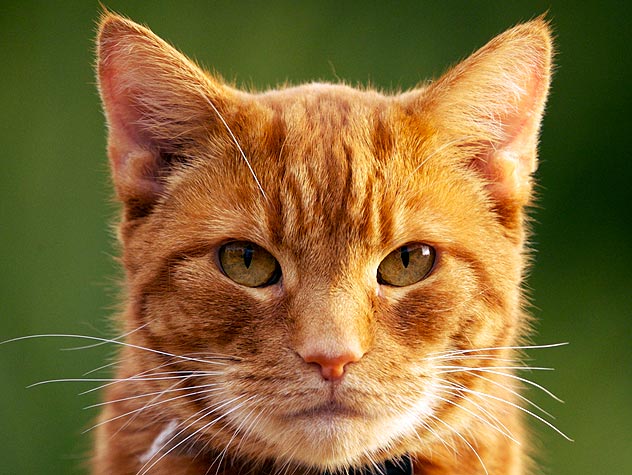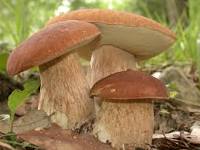Souvenir Sheet: Cats (Cinderellas 2009)
Cats (Cinderellas 2009)
01 January (Cinderellas ) within release Russia : Bashkortostan goes into circulation Souvenir Sheet Cats face value 9 Russian ruble
| Souvenir Sheet Cats in catalogues | |
|---|---|
| Colnect codes: | Col: RU-BA 2009-17 |
Souvenir Sheet is square format.
This item was illegally produced without the authorization of the postal administration inscribed on the stamps. It has no postal validity.Also in the issue Russia : Bashkortostan:
- Stamp - Owl face value 9;
- Stamp - Owl face value 9;
- Stamp - Owl face value 9;
- Stamp - Owl face value 9;
- Stamp - Owl face value 9;
- Stamp - Owl face value 9;
- Stamp - Owl face value 9;
- Stamp - Owl face value 9;
- Stamp - Owl face value 9;
- Stamp - Owl face value 9;
- Stamp - Owl face value 9;
- Stamp - Owl face value 9;
- Stamp - Owl face value 9;
- Stamp - Owl face value 9;
- Stamp - Owl face value 9;
- Stamp - Owl face value 9;
- Stamp - Owl face value 9;
- Stamp - Owl face value 9;
- Mini Sheet - Owls face value 18*9;
- Souvenir Sheet - Animals face value 9;
- Souvenir Sheet - Butterflies face value 9;
- Souvenir Sheet - Cats face value 9;
- Souvenir Sheet - Famous People face value 9;
- Souvenir Sheet - Fishes face value 9;
- Mini Sheet - Locomotives face value 9*23;
- Stamp - Locomotives face value 23;
- Mini Sheet - Locomotives face value 9*23;
- Stamp - Locomotives face value 23;
- Souvenir Sheet - Mushrooms face value 9;
- Mini Sheet - Owls face value 6*9;
- Mini Sheet - Owls face value 140;
- Se-tenant - Owls face value 4*10;
- Se-tenant - Owls face value 20;
- Se-tenant - Owls face value 30;
- Se-tenant - Owls face value 40;
- Se-tenant - Owls face value 50;
- Mini Sheet - Owls face value 140;
- Se-tenant - Owls face value 4*10;
- Se-tenant - Owls face value 20;
- Se-tenant - Owls face value 30;
- Se-tenant - Owls face value 40;
- Se-tenant - Owls face value 50;
- Mini Sheet - Owls face value 170;
- Se-tenant - Owls face value 60;
- Souvenir Sheet - Owls face value 10;
- Se-tenant - Owls face value 110;
- Souvenir Sheet - Owls face value 10;
- Se-tenant - Owls face value 2*10;
- Mini Sheet - Owls face value 170;
- Se-tenant - Owls face value 60;
- Mini Sheet - Owls face value 10;
- Se-tenant - Owls face value 110;
- Souvenir Sheet - Owls face value 10;
- Se-tenant - Owls face value 2*20;
- Stamp - Owls face value 9;
- Souvenir Sheet - Owls face value 9;
- Souvenir Sheet - Owls face value 23;
- Stamp - Owls face value 23;
- Souvenir Sheet - Owls face value 10;
- Souvenir Sheet - Owls face value 10;
- Souvenir Sheet - Owls face value 10;
- Souvenir Sheet - Owls face value 10;
- Souvenir Sheet - Owls face value 10;
- Souvenir Sheet - Owls face value 10;
- Souvenir Sheet - Owls face value 10;
- Souvenir Sheet - Owls face value 10;
- Souvenir Sheet - Owls and Mushrooms face value 70;
- Souvenir Sheet - Owls and Mushrooms face value 70;
- Souvenir Sheet - Owls and Mushrooms face value 70;
- Souvenir Sheet - Owls and Mushrooms face value 70;
- Souvenir Sheet - Owls and Mushrooms face value 70;
- Souvenir Sheet - Owls and Mushrooms face value 70;
- Souvenir Sheet - Owls and Mushrooms face value 95;
- Souvenir Sheet - Owls and Mushrooms face value 95;
- Souvenir Sheet - Owls and Mushrooms face value 95;
- Souvenir Sheet - Owls and Mushrooms face value 95;
- Souvenir Sheet - Owls and Mushrooms face value 95;
|
Data entry completed
53%
|
|
|---|---|
| Souvenir Sheet Cats in digits | |
| Country: | Cinderellas |
| Date: | 2009-01-01 |
| Print: | Offset lithography |
| Emission: | Незаконный |
| Format: | Souvenir Sheet |
| Face Value: | 9 Russian ruble |
Souvenir Sheet Cats it reflects the thematic directions:
Animals are multicellular, eukaryotic organisms of the kingdom Animalia (also called Metazoa). All animals are motile, meaning they can move spontaneously and independently, at some point in their lives. Their body plan eventually becomes fixed as they develop, although some undergo a process of metamorphosis later on in their lives. All animals are heterotrophs: they must ingest other organisms or their products for sustenance.
Birds (Aves), a subgroup of Reptiles, are the last living examples of Dinosaurs. They are a group of endothermic vertebrates, characterised by feathers, toothless beaked jaws, the laying of hard-shelled eggs, a high metabolic rate, a four-chambered heart, and a strong yet lightweight skeleton. Birds live worldwide and range in size from the 5 cm (2 in) bee hummingbird to the 2.75 m (9 ft) ostrich. They rank as the class of tetrapods with the most living species, at approximately ten thousand, with more than half of these being passerines, sometimes known as perching birds. Birds are the closest living relatives of crocodilians.
The domestic cat (Latin: Felis catus) is a small, typically furry, carnivorous mammal. They are often called house cats when kept as indoor pets or simply cats when there is no need to distinguish them from other felids and felines. Cats are often valued by humans for companionship and for their ability to hunt vermin. There are more than 70 cat breeds, though different associations proclaim different numbers according to their standards.
Cats are similar in anatomy to the other felids, with a strong flexible body, quick reflexes, sharp retractable claws, and teeth adapted to killing small prey. Cat senses fit a crepuscular and predatory ecological niche. Cats can hear sounds too faint or too high in frequency for human ears, such as those made by mice and other small animals. They can see in near darkness. Like most other mammals, cats have poorer color vision and a better sense of smell than humans. Cats, despite being solitary hunters, are a social species and cat communication includes the use of a variety of vocalizations (mewing, purring, trilling, hissing, growling, and grunting), as well as cat pheromones and types of cat-specific body language.
Insects (from Latin insectum, a calque of Greek ἔντομον [éntomon], "cut into sections") are a class (Insecta) of hexapod invertebrates within the arthropod phylum that have a chitinous exoskeleton, a three-part body (head, thorax and abdomen), three pairs of jointed legs, compound eyes and one pair of antennae. They are the most diverse group of animals on the planet, including more than a million described species and representing more than half of all known living organisms. The number of extant species is estimated at between six and ten million, and potentially represent over 90% of the differing animal life forms on Earth. Insects may be found in nearly all environments, although only a small number of species reside in the oceans, a habitat dominated by another arthropod group, crustaceans. The life cycles of insects vary but most hatch from eggs. Insect growth is constrained by the inelastic exoskeleton and development involves a series of molts. The immature stages can differ from the adults in structure, habit and habitat, and can include a passive pupal stage in those groups that undergo 4-stage metamorphosis (see holometabolism). Insects that undergo 3-stage metamorphosis lack a pupal stage and adults develop through a series of nymphal stages. The higher level relationship of the Hexapoda is unclear. Fossilized insects of enormous size have been found from the Paleozoic Era, including giant dragonflies with wingspans of 55 to 70 cm (22–28 in). The most diverse insect groups appear to have coevolved with flowerin plants.
Mammals are any vertebrates within the class Mammalia (/məˈmeɪli.ə/ from Latin mamma "breast"), a clade of endothermic amniotes distinguished from reptiles (including birds) by the possession of a neocortex (a region of the brain), hair, three middle ear bones and mammary glands. All female mammals nurse their young with milk, secreted from the mammary glands. Mammals include the largest animals on the planet, the great whales. The basic body type is a terrestrial quadruped, but some mammals are adapted for life at sea, in the air, in trees, underground or on two legs. The largest group of mammals, the placentals, have a placenta, which enables the feeding of the fetus during gestation. Mammals range in size from the 30–40 mm (1.2–1.6 in) bumblebee bat to the 30-meter (98 ft) blue whale. With the exception of the five species of monotreme (egg-laying mammals), all modern mammals give birth to live young. Most mammals, including the six most species-rich orders, belong to the placental group. The largest orders are the rodents, bats and Soricomorpha (shrews and allies). The next three biggest orders, depending on the biological classification scheme used, are the Primates (apes and monkeys), the Cetartiodactyla (whales and even-toed ungulates), and the Carnivora (cats, dogs, seals, and allies).
A mushroom (or toadstool) is the fleshy, spore-bearing fruiting body of a fungus, typically produced above ground on soil or on its food source. The standard for the name "mushroom" is the cultivated white button mushroom, Agaricus bisporus; hence the word "mushroom" is most often applied to those fungi (Basidiomycota, Agaricomycetes) that have a stem (stipe), a cap (pileus), and gills (lamellae, sing. lamella) on the underside of the cap. These gills produce microscopic spores that help the fungus spread across the ground or its occupant surface. "Mushroom" describes a variety of gilled fungi, with or without stems, and the term is used even more generally, to describe both the fleshy fruiting bodies of some Ascomycota and the woody or leathery fruiting bodies of some Basidiomycota, depending upon the context of the word. Forms deviating from the standard morphology usually have more specific names, such as "bolete", "puffball", "stinkhorn", and "morel", and gilled mushrooms themselves are often called "agarics" in reference to their similarity to Agaricus or their order Agaricales. By extension, the term "mushroom" can also designate the entire fungus when in culture; the thallus (called a mycelium) of species forming the fruiting bodies called mushrooms; or the species itself.
Owls are birds from the order Strigiformes, which includes over 200 species of mostly solitary and nocturnal birds of prey typified by an upright stance, a large, broad head, binocular vision, binaural hearing, sharp talons, and feathers adapted for silent flight. Exceptions include the diurnal northern hawk-owl and the gregarious burrowing owl.







